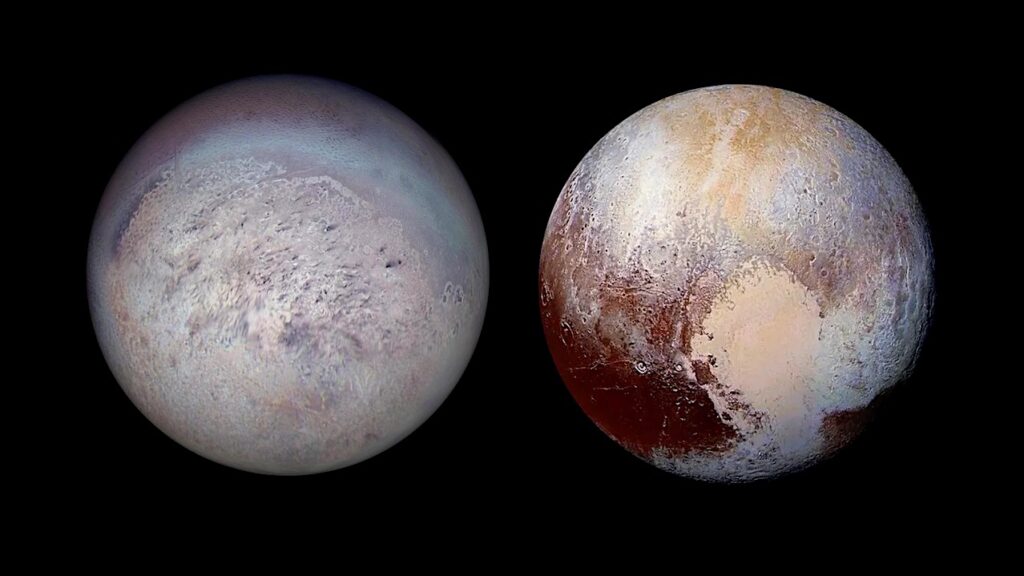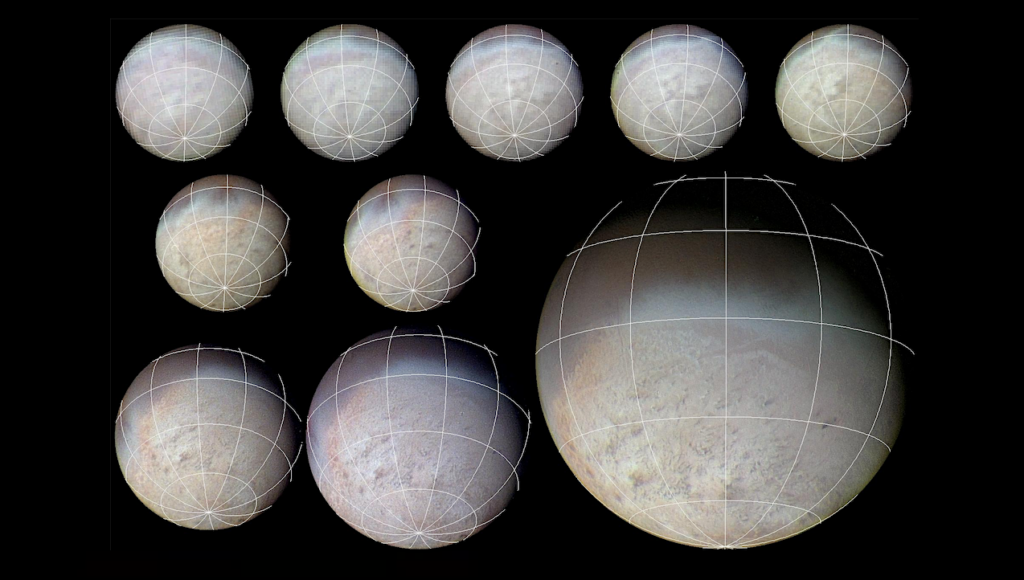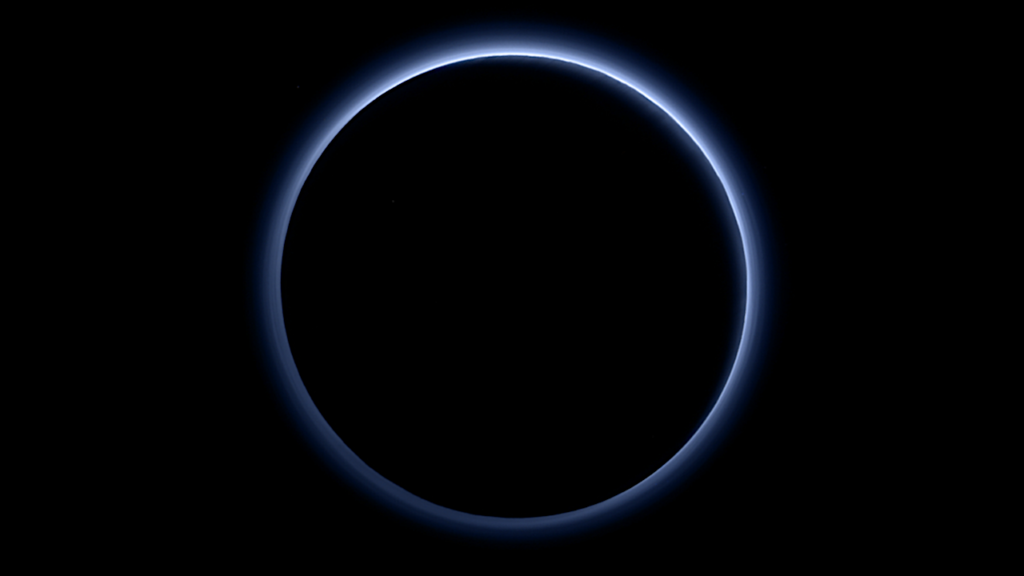Volatile Transport Modeling On Triton With New Observational Constraints

Neptune’s moon Triton shares many similarities with Pluto, including volatile cycles of N2, CH4 and CO, and represents a benchmark case for the study of surface-atmosphere interactions on volatile-rich KBOs.
Within the context of New Horizons observations of Pluto as well as recent Earth-based observations of Triton, we adapt a Plutonian VTM to Triton, and test its ability to simulate its volatile cycles, thereby aiding our understanding of its climate. We present VTM simulations exploring the volatile cycles on Triton over long-term and seasonal timescales for varying model parameters. We explore what scenarios and model parameters allow for a best match of the available observations. In particular, our set of observational constraints include Voyager 2 observations, ground-based NIR (0.8 to 2.4 {\mu}m) disk-integrated spectra and the evolution of surface pressure as retrieved from stellar occultations.
Our results show that Triton’s poles act as cold traps for volatile ices and favor the formation of polar caps extending to lower latitudes through glacial flow. As previously evidenced by other VTMs, North-South asymmetries in surface properties can favor the development of one cap over the other. Our best-case simulations are obtained for a global reservoir of N2 ice thicker than 200 m and a bedrock thermal inertia larger than 500 SI. The large N2 ice reservoir implies a permanent N2 southern cap extending to the equator. Our results also suggest that a small permanent polar cap exists in the northern (currently winter) hemisphere if the internal heat flux remains radiogenic (< 3 mW m-2). Finally, we provide predictions for the evolution of ice distribution, surface pressure, CO and CH4 atmospheric mixing ratios in the next decades. We also model the thermal lightcurves of Triton in 2022, which serve as predictions for future JWST observations.
T. Bertrand, E. Lellouch, B. J. Holler, L. A. Young, B. Schmitt, J. Marques Oliveira, B. Sicardy, F. Forget, W. M. Grundy, F. Merlin, M. Vangvichith, E. Millour, P. Schenk, C. Hansen, O. White, J. Moore, J. Stansberry, A. Oza, D. Dubois, E. Quirico, D. Cruikshank
Comments: 69 pages, 29 figures, 3 tables. Accepted for publication in Icarus
Subjects: Earth and Planetary Astrophysics (astro-ph.EP)
Cite as: arXiv:2110.11992 [astro-ph.EP] (or arXiv:2110.11992v1 [astro-ph.EP] for this version)
Submission history
From: Tanguy Bertrand
[v1] Fri, 22 Oct 2021 18:19:10 UTC (24,066 KB)
https://arxiv.org/abs/2110.11992
Astrobiology








